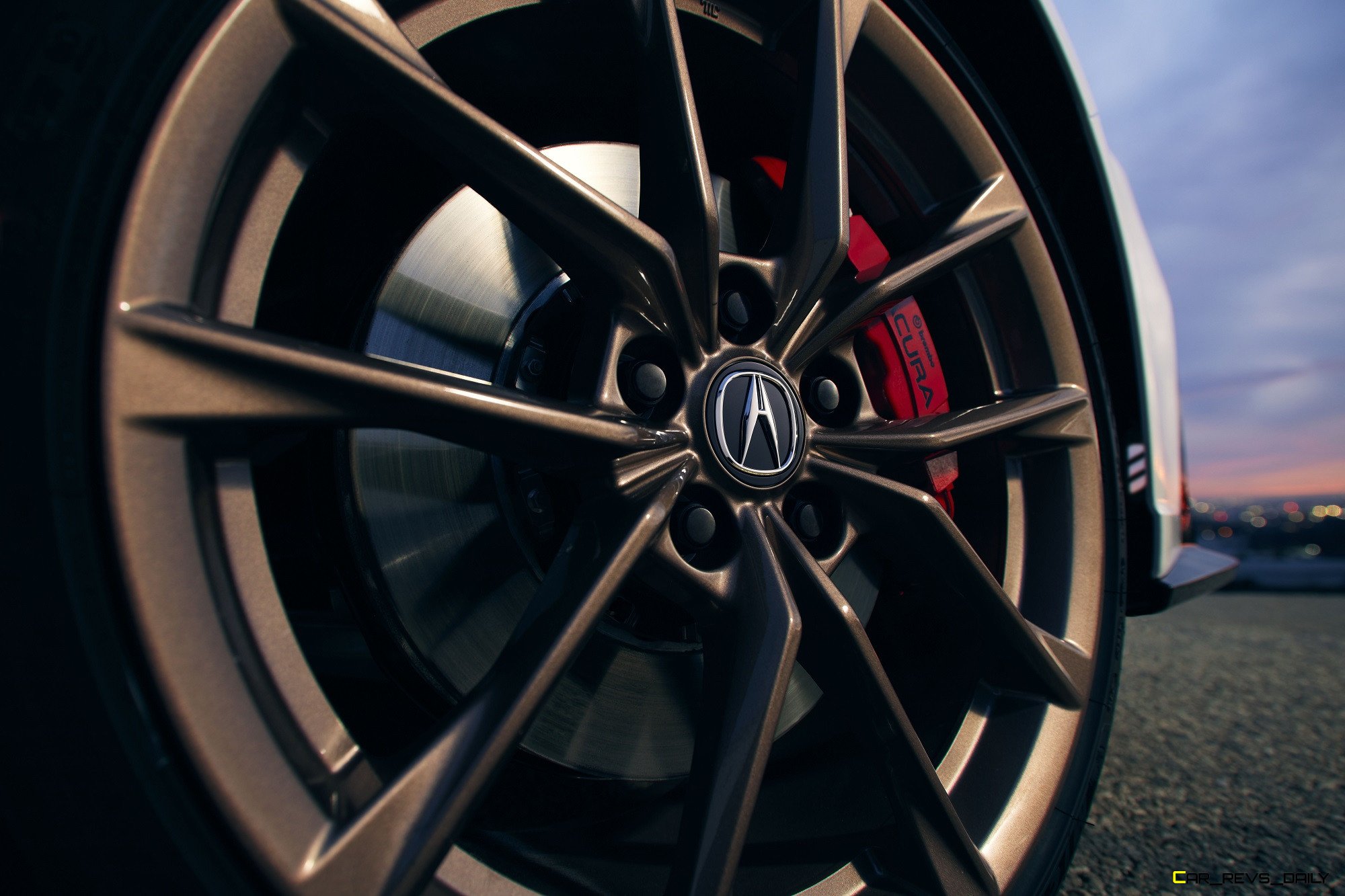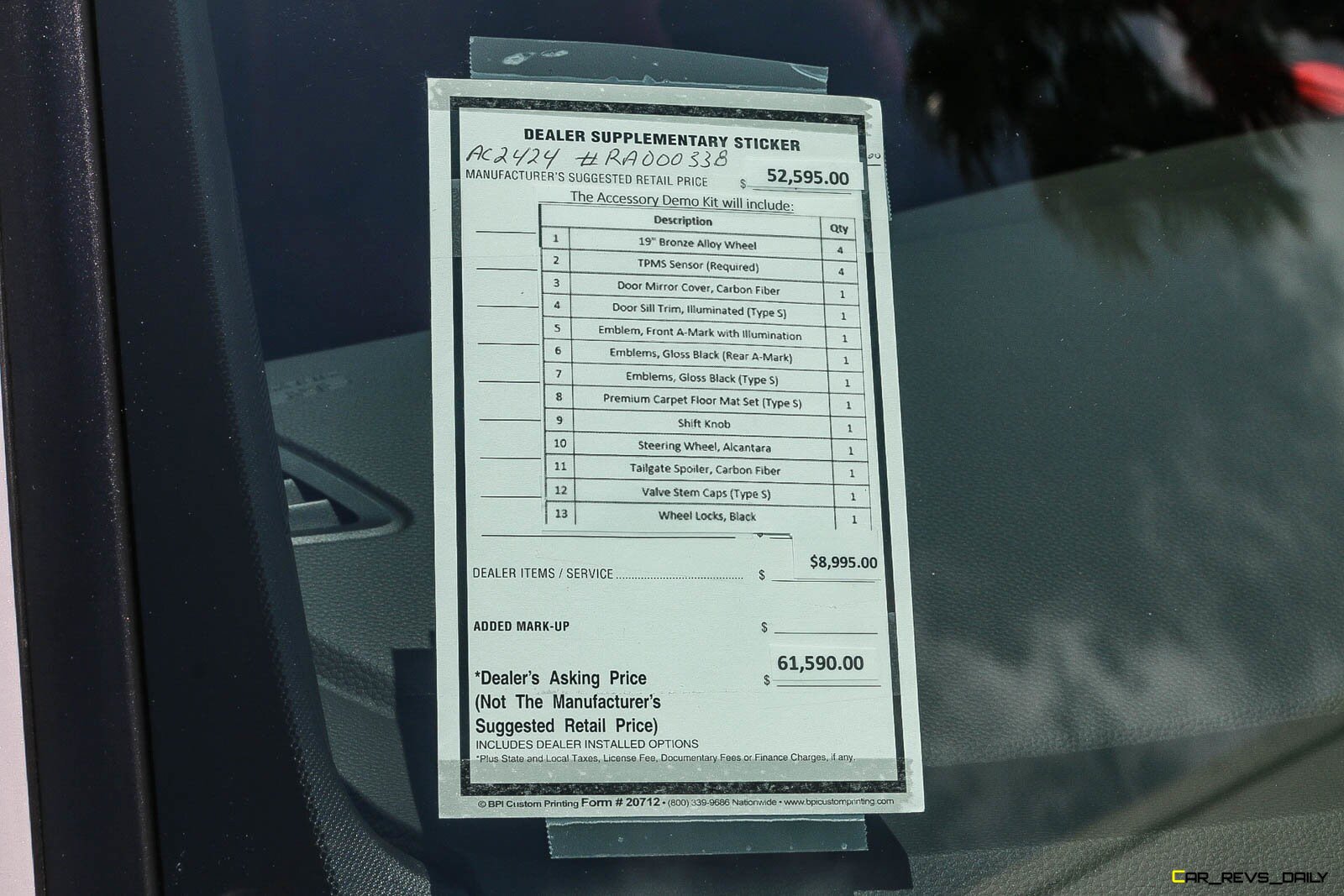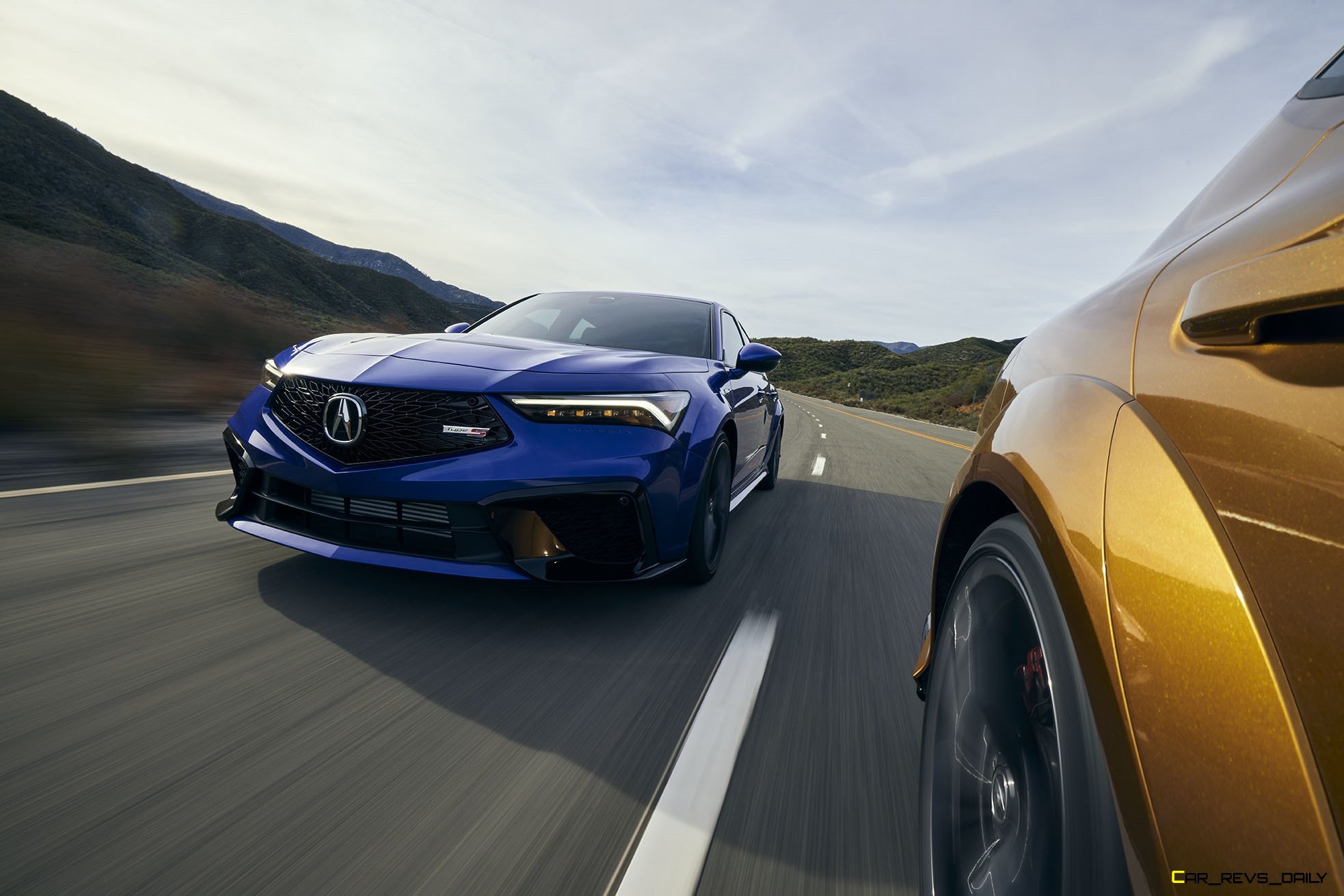Let’s face it, folks, dealer markups (especially in a post-COVID-19 world) have rapidly become an undesirable but virtually impossible-to-avoid aspect of shopping for a majority of new vehicles (especially performance models). We have seen markups for all kinds of things over the years, but a recent trip through the land of Facebook (and later investigation) revealed a puzzling markup item that made us ask; Should federally mandated pieces of safety equipment be used to help pad a dealership’s profits?
TPMS Sensors, Why We Need Them, and How Are They An Accessory?

The listing that caught our attention (and subsequently raised our alarm bells) was posted by the Santa Barbara Auto Group located in Santa Barbara, California. This automotive dealer franchise offers vehicles from a wide range of brands, including Land Rover, Audi, Mercedes-Benz, BMW, and the subject of this story, Acura. The listing in question features the 2024 Acura Integra Type S, which is the brand’s latest addition to its growing family of Type S performance vehicles. The model is powered by a 2.0-liter turbocharged four-cylinder that makes 320 horsepower and is mated to a six-speed manual. When all of this is combined with the performance upgrades on hand, it helps create a compelling performance offering. According to Acura, the model is supposed to have a manufacturer’s suggested MSRP of $51,995 when you include the $1,195 destination fee, but before any local-level fees are mixed in.
The listing at Santa Barbara Auto Group is for a Type S in Platinum White Pearl (a $600 option), and on the surface, it appears to be a base spec variant (we have included a link to the listing here). The listing itself is fairly mundane and about what you would expect for a typical dealer advertisement, with the digitally listed price currently at $52,595 (a slight bump over the $51,400 Acura charges when Platinum White is added.) But scroll through the elaborate photo gallery, and you come to the Dealer Supplementary Sticker, which is commonly used for any dealer add-ons and charges. On this particular Type S, the dealer adds an $8,995 “Accessory Demo Kit,” and it becomes evident that this is an attempt to add extra padding to the potential profit. Read the list, and you see that this purported “kit” attempts to lump typically separate optional extras, including the 19-inch bronzed alloy wheels, the Alcantara-adorned steering wheel, and even the shift knob and valve-stem covers, into one unified package that raises the price to $61,590.

However, it’s item number two on that long list that made our blood boil, TPMS Sensors. TPMS sensors are federally mandated on all motor vehicles sold in the U.S. and have been required equipment since 2007 when the devices were made mandatory as part of the U.S. passing the TREAD Act a few years prior in 2000 after the infamous Ford/Firestone tire controversy. The technology itself has undergone several refinements and evolutions over the years but has proven to be a critical piece of vehicle safety gear that allows owners to not only spot a potential flat tire sooner but also to know which tire is losing air and help reduce the risk of a catastrophic blowout. Working in several dealerships before making the switch to formal press duties allowed me to see a wide variety of these markups in action during that time, but this is arguably the first time that we have seen a dealer showroom even attempt to lump TPMS technology into a markup price. Part of this is due to the fitment of the new copper-hued wheels (which requires new TPMS sensors to be installed and subsequently calibrated by a technician), but it also raises questions on whether a safety feature (especially one that’s standard on all cars) should even be used as a tool to pad dealership profits, to begin with? (the sensors are $167 for those that are curious.)
What Can You Do As A Consumer?
With dealer franchise laws in many states, auto manufacturers themselves have limited power to address markups like these, but they can warn dealerships about charging excessive markups for vehicles via internal memos and statements as well as punish offending franchises in the form of reduced allotments for select models. As a result of this limited ability to deal with markups on the manufacturer’s side of things, it’s ultimately up to the consumer to do their part to find a vehicle that’s the right price for them. That includes shopping around multiple dealerships and comparing prices (they may vary from one dealer to another), as well as looking over all the window stickers carefully to spot any markups. If the markups are present, read them carefully and see what the dealership has added to help you understand what the extra charges are for.
Last but not least, ask questions. Never be afraid to ask them during the buying process, and we recommend having a list of questions ready before you begin talking with the salesperson, especially in key areas like pricing, vehicle features, and potential markups. Asking these questions and taking the steps described can help you navigate the car-buying experience and give you the tools needed to make an informed vehicle-purchasing decision for both you and your family. We reached out to Santa Barbara Auto Group to try and understand why the TPMS sensors were added to this particular markup and were told that it was a kit that was required to be added by the manufacturer (as well as recouping costs for the TPMS sensors and the rest of the accessories as a whole.)
We have also reached out to Acura too and will update this story here if we get any response. In a world where rising costs and broader inflation have made many things more expensive, we think that safety and the quest for extra profits should be two things that never mix, regardless of the current state of the global buying market.

Carl Malek has been an automotive journalist for over 10 years. First starting out as a freelance photographer before making the transition to writing during college, his work has appeared on numerous automotive forums as well as websites such as Autoshopper.com.
Carl is also a big fan of British vehicles with the bulk of his devotion going to the Morgan Motor Company as well as offerings from Lotus, MG, and Caterham. When he is not writing about automobiles, Carl enjoys spending time with his family and friends in the Metro Detroit area, as well as spending time with his adorable pets.

